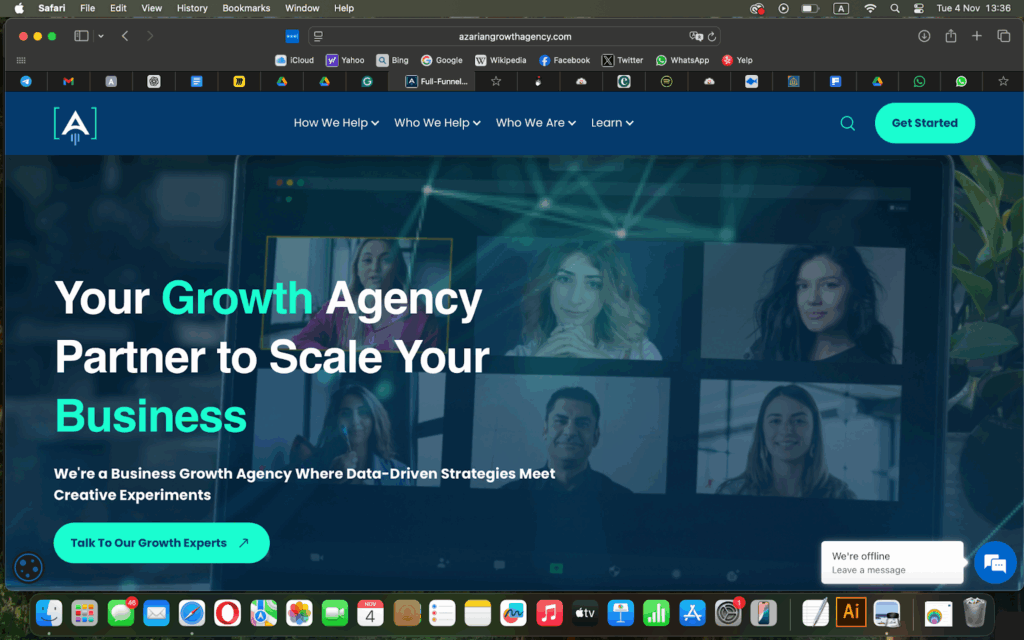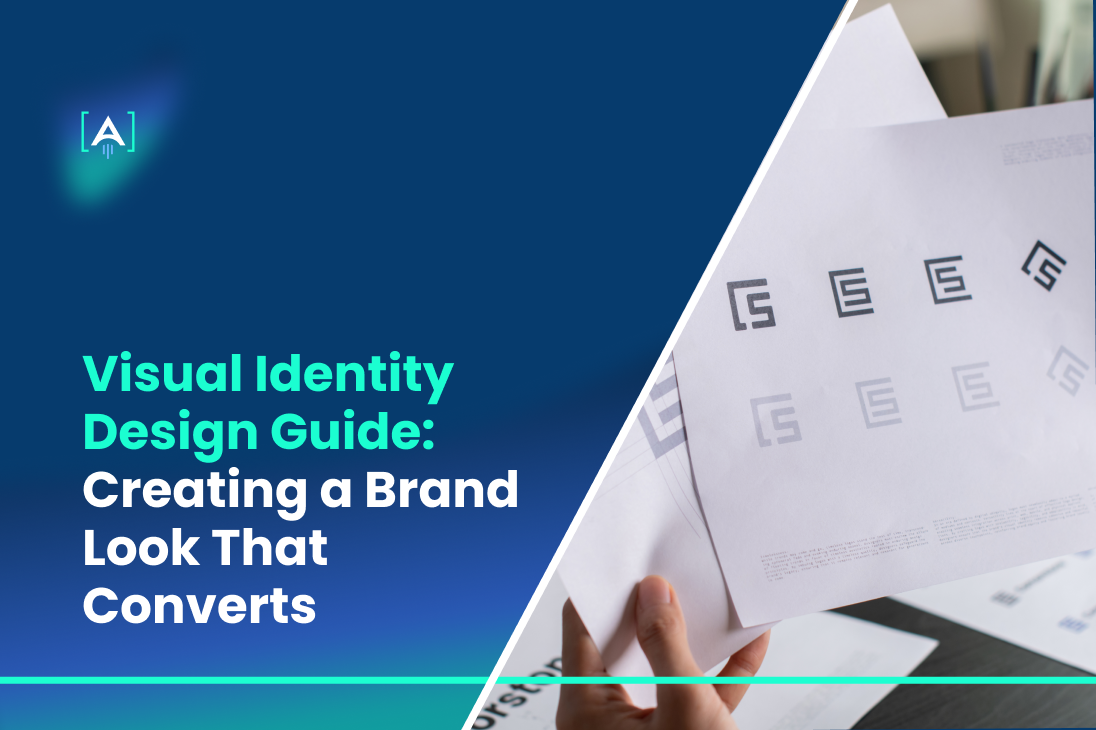Successfully implementing visual identity design requires attention to multiple elements that work together seamlessly. These elements ensure your brand communicates clearly and consistently to your audience.
Key aspects to consider include:
- Consistency Across Channels: Ensure your logo, colors, and typography are uniform across social media, website, and physical materials.
- Emotional Impact: Colors, shapes, and imagery should evoke feelings that align with your brand personality.
- Scalability: Design assets should look professional and maintain clarity across different sizes and formats.
Investing in these areas leads to tangible benefits for your business:
- Increased brand recognition and trust
- Higher customer engagement and loyalty
- Improved conversion rates and retention
By focusing on these fundamentals, businesses can create a visual identity that resonates with their audience and supports long-term growth. This guide will help you take each step methodically, ensuring your brand identity is not only attractive but also effective in driving results.
What Is Visual Identity Design
Visual identity design defines the visual elements that represent your brand and communicate its personality to customers. It includes your logo, typography, color palette, imagery, iconography, and overall graphic style. Unlike short-term marketing campaigns, visual identity design focuses on long-term recognition and consistency across every touchpoint.
A strong visual identity helps customers instantly associate your brand with trust, professionalism, and reliability. It’s the visual language that communicates who you are; often before a single word is read.
Key components of visual identity design include:
- Logo: A distinctive symbol or wordmark that instantly represents your brand.
- Color Palette: A consistent set of colors that evokes emotion and recognition.
- Typography: Fonts that reflect brand personality while remaining accessible and readable.
- Imagery and Iconography: Photos, illustrations, and icons that visually express your brand story.
- Graphic Style: Layouts, shapes, and design elements that ensure uniformity across platforms.
Famous examples demonstrate the power of strong visual identity design:
- Starbucks: Its green logo and minimalist design are recognized globally, reinforcing a sense of familiarity and calm.

- Coca-Cola: The red color scheme and signature script evoke energy, nostalgia, and happiness.

- Apple: Its sleek, minimalist design language reflects innovation and simplicity, reinforcing its brand promise.

- A well-executed visual identity design also integrates seamlessly with your brand voice development and brand experience design. Together, they create a cohesive system that tells one consistent story, strengthening trust, loyalty, and recognition over time.
Why Visual Identity Design Matters for Conversions
Visual identity design plays a powerful role in shaping consumer trust and influencing purchase decisions. According to the CDP Institute, 81 % of consumers say trust is a deciding factor in purchasing decisions, while 87 % of shoppers are willing to pay more for products from brands they trust, according to Salsify.
A cohesive visual identity helps your brand appear reliable, professional, and memorable. When design elements such as color, typography, and imagery remain consistent across every platform, they create a sense of familiarity that encourages customers to engage and return.
Visual cues also shape how customers interpret value and emotion. For example, online stores that maintain unified visuals across their website, advertising, and email communication report higher click-through rates and stronger repeat purchase behavior.
A strong visual identity design does more than make your brand look appealing. It builds emotional confidence in your audience, turning recognition into trust and trust into conversion.
Key elements of a conversion-focused visual identity include:
Color psychology: Colors influence emotions and actions. Blue evokes trust, while red encourages energy and attention.
Typography: Clear and distinctive fonts help your message appear credible and consistent.
Imagery and layout: Clean, high-quality visuals enhance user experience and encourage engagement.
For example, many e-commerce businesses achieve higher conversion rates when they standardize product photography, color palettes, and typography. This creates a familiar and trustworthy environment that keeps customers engaged longer and more willing to purchase.
In essence, visual identity is more than what customers see. It is what makes them remember, trust, and choose your brand over others.
Key Elements of Visual Identity Design
- Logo: Acts as the central symbol of your brand. Simple, scalable logos increase recognition.
- Typography: Fonts convey personality and hierarchy; consistency across channels is essential.
- Color Palette: Colors evoke emotions and should remain uniform across all platforms.
- Imagery: Photos, illustrations, and icons must align with brand tone and voice.
- Templates: Pre-designed layouts for ads, presentations, and social media ensure consistency.
Example of Strong Visual Identity
Airbnb’s 2014 brand refresh combined a visual update with storytelling to achieve global recognition. Businesses can replicate their success by following these steps:
- Plan pre-launch, launch, and post-launch activities carefully
- Align internal teams with the brand vision and messaging
- Track engagement metrics and adjust campaigns based on insights
Crafting a Visual Identity Design Guide
A brand development guide consolidates all design standards into a single reference document, enabling teams to communicate effectively. It includes mission and vision statements, target audience personas, brand tone and voice, visual identity guidelines, and brand experience checkpoints.
Maintaining a structured guide reduces inconsistencies, speeds decision-making, and allows teams to execute campaigns confidently. Following these standards ensures long-term consistency and enhances overall brand perception.
Leveraging Conversion-Focused Design Principles
Visual identity design should always support business outcomes. Color, typography, and layout choices should guide user attention and drive action. Optimizing design for digital and physical touchpoints guarantees a seamless brand experience, which increases conversion rates and loyalty.
For instance, Shopify uses AI-driven insights to adjust visual elements for higher engagement. Businesses can implement:
- Split testing design variations for campaigns
- Tracking metrics such as click-through rates and conversions
- Iterating visual elements based on real-time results
Leveraging GEO and Vibe Coding for Brand Visibility
Beyond traditional branding, GEO and vibe coding are essential for businesses targeting AI-driven search results and local markets. These strategies strengthen brand authority and increase discoverability in relevant regions.
Key actions include:
- GEO Content Planning: Map content to maximize local search discovery
- AI Citation Tracking: Monitor brand mentions in generative AI engines
- Vibe Coding: Adjust messaging tone to fit cultural and emotional context
Integrate analytics dashboards to monitor AI-generated content visibility. Use prompt-based research to uncover trending local queries. Automate reporting to adjust campaigns in real time. By combining GEO tools with a solid visual identity design, businesses ensure their brand reaches relevant audiences efficiently while maintaining a consistent identity.
Getting Started: Actionable Steps for Your Business
Building a strong visual identity design requires structure, focus, and consistent execution. Every stage contributes to long-term brand equity and measurable growth. Below is a simple yet strategic roadmap to help your business implement a visual identity that drives recognition and conversions.
Week 1 – Conduct a Brand Audit and Define the Foundation
Start by performing a complete brand audit to understand how your business is currently perceived. Review your existing assets, color schemes, and messaging. Compare your brand to competitors to identify positioning gaps and new opportunities. Define your audience personas to ensure your visuals align with real customer needs and preferences.
Month 1 – Create Your Visual Identity and Establish Communication Guidelines
Once the foundation is clear, begin drafting your core visual identity. This includes your logo, color palette, typography, and overall style direction. At the same time, create your brand voice development guidelines to ensure your messaging matches your visuals. A cohesive tone enhances every customer touchpoint and reinforces trust.
Quarter 1 – Implement Experience and Strategy for Long-Term Growth
With your visuals and voice ready, it is time to scale implementation. Develop a brand guidelines template that defines how each element should be used across channels. Integrate this into your brand experience design so every customer interaction feels intentional and consistent. Plan your brand launch strategy or rebranding strategy with clear milestones, internal communication, and content rollouts.
Essential Resources and Metrics to Monitor
Use professional design software such as Adobe Creative Cloud or Figma for design creation. Content planning tools like Notion or Asana help keep collaboration organized. Analytics platforms such as Google Analytics or HubSpot measure impact and engagement.
Track key metrics including:
- Brand recall rate and recognition growth
- Engagement on digital platforms
- Website traffic trends
- Customer loyalty and retention rate
Consistently reviewing performance ensures your team can refine visuals and messaging before scaling. When your visual identity design aligns with a clear brand strategy framework, it transforms from aesthetic value into a measurable business growth engine.
Working With a Branding Agency
Collaborating with a professional branding agency gives your business the structure and expertise needed to create a lasting impact. Developing a strong visual identity design is not just about choosing colors or designing a logo. It is about aligning your visuals, messaging, and customer experience under a unified brand strategy framework. Agencies bring strategic thinking, creative execution, and data-driven insights that help your brand stand out and scale effectively.
Key benefits of working with a branding agency include:
- Maintaining consistency across all visual and messaging elements
- Saving time and resources through expert project management
- Applying a structured approach to brand voice development and brand experience design
- Creating a brand guidelines template to align internal and external communications
Typical process steps include:
- Market research and audience analysis to understand your positioning
- Designing visual identity systems, including logos, colors, typography, and imagery
- Integrating visuals with messaging to reinforce your brand strategy framework
- Implementing rollout plans for new launches or rebranding strategies
- Monitoring performance and providing adjustments to maximize brand impact
Azarian Growth Agency works with business owners and CEOs to design and implement visual identity systems that not only look exceptional butalso drive measurable growth. Whether you need a brand launch strategy to enter new markets or a complete rebranding strategy to modernize your image, the agency provides a structured approach backed by expertise and proven marketing outcomes.
Partnering with professionals ensures your brand maintains visual coherence across platforms, builds trust faster, and achieves long-term recognition. With the right agency, you can focus on growing your business while experts manage your brand’s evolution from identity creation to strategic expansion.
Conclusion
Visual identity design is the foundation of a brand that is immediately recognizable, trusted by customers, and capable of driving meaningful conversions.
When combined with a structured brand strategy framework and a comprehensive brand development guide, it ensures every touchpoint, whether digital, physical, or experiential, communicates a consistent and memorable message.
Businesses that follow clear visual identity standards see measurable improvements in customer engagement, retention, and overall revenue growth, as consistent branding strengthens perception and builds loyalty over time.
Working with a knowledgeable branding agency, such as Azarian Growth Agency, provides the expertise and strategic insight necessary to implement visual identity designs that align seamlessly with brand voice development and brand experience design.
Agencies help businesses navigate complex rebranding processes, create actionable brand guidelines templates, and execute brand launch strategies that deliver results.

Investing in a professional visual identity ensures your brand stands out in crowded markets, resonates with your target audience, and drives customer trust and loyalty.
By partnering with experts, you gain access to proven methodologies, industry insights, and creative solutions that elevate your brand’s perception and long-term growth.
Start today to define a cohesive visual identity, strengthen customer trust, and partner with Azarian Growth Agency to craft a brand look that truly converts and positions your business for lasting success.

